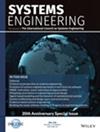约束下系统模块化的强化学习方法
IF 1.6
3区 工程技术
Q4 ENGINEERING, INDUSTRIAL
引用次数: 0
摘要
模块化是一种通过封装模块内组件之间的复杂交互并减少模块之间的依赖性来简化系统架构和设计的方法。基于设计结构矩阵(DSM)的聚类算法已被证明有助于这种分析,因为它们在使用传统软件操作大量元素时很方便。然而,在模块化中存在必须保持约束的问题,例如,处理不能或必须在具有过热、压力、磁场或其他场的区域中执行的功能或系统。排除此类领域边界考虑可能导致DSM计算的模块化体系结构解决方案捆绑了不实用的领域不兼容功能或组件。使用传统的DSM聚类算法不考虑这种区域场约束因素。我们引入了一种基于DSM的聚类算法,该算法通过约束矩阵结合了这些实际实施例约束,该约束矩阵指示哪些元素可以或不能放置在同一字段区域中。然后,我们使用强化学习来允许聚类算法利用其从先前尝试和聚类过程中获得的知识,以促进约束下的优化。我们展示了两个医用造影剂注射器和三相泵电机控制器板的例子。本文章由计算机程序翻译,如有差异,请以英文原文为准。
A reinforcement learning approach to system modularization under constraints
Modularization is an approach for system architecting and design simplification by encapsulating complex interactions among components within modules and reducing dependencies across modules. Design structure matrix (DSM) based clustering algorithms have proven helpful for such analysis, owing to their convenience in manipulating a large number of elements using conventional software. However, there are problems where constraints must be maintained in the modularization, for example, coping with functions or systems that either cannot or must be performed in regions with excessive heat, pressure, magnetic or other fields. Excluding such field boundary considerations can result in DSM computed modular architectural solutions that bundle field‐incompatible functions or components that are not practical. Such regional field constraint considerations are not taken into account using conventional DSM clustering algorithms. We introduce a DSM‐based clustering algorithm that incorporates these practical embodiment constraints through a constraint matrix indicating which elements can or cannot be placed in the same field region. We then employ reinforcement learning to allow the clustering algorithm to exploit its learnings from the previous attempts and during the clustering to facilitate the optimization under constraints. We demonstrate two examples of a medical contrast injector and the controller board of a three‐phase pump motor.
求助全文
通过发布文献求助,成功后即可免费获取论文全文。
去求助
来源期刊

Systems Engineering
工程技术-工程:工业
CiteScore
5.10
自引率
20.00%
发文量
0
审稿时长
6 months
期刊介绍:
Systems Engineering is a discipline whose responsibility it is to create and operate technologically enabled systems that satisfy stakeholder needs throughout their life cycle. Systems engineers reduce ambiguity by clearly defining stakeholder needs and customer requirements, they focus creativity by developing a system’s architecture and design and they manage the system’s complexity over time. Considerations taken into account by systems engineers include, among others, quality, cost and schedule, risk and opportunity under uncertainty, manufacturing and realization, performance and safety during operations, training and support, as well as disposal and recycling at the end of life. The journal welcomes original submissions in the field of Systems Engineering as defined above, but also encourages contributions that take an even broader perspective including the design and operation of systems-of-systems, the application of Systems Engineering to enterprises and complex socio-technical systems, the identification, selection and development of systems engineers as well as the evolution of systems and systems-of-systems over their entire lifecycle.
Systems Engineering integrates all the disciplines and specialty groups into a coordinated team effort forming a structured development process that proceeds from concept to realization to operation. Increasingly important topics in Systems Engineering include the role of executable languages and models of systems, the concurrent use of physical and virtual prototyping, as well as the deployment of agile processes. Systems Engineering considers both the business and the technical needs of all stakeholders with the goal of providing a quality product that meets the user needs. Systems Engineering may be applied not only to products and services in the private sector but also to public infrastructures and socio-technical systems whose precise boundaries are often challenging to define.
 求助内容:
求助内容: 应助结果提醒方式:
应助结果提醒方式:


